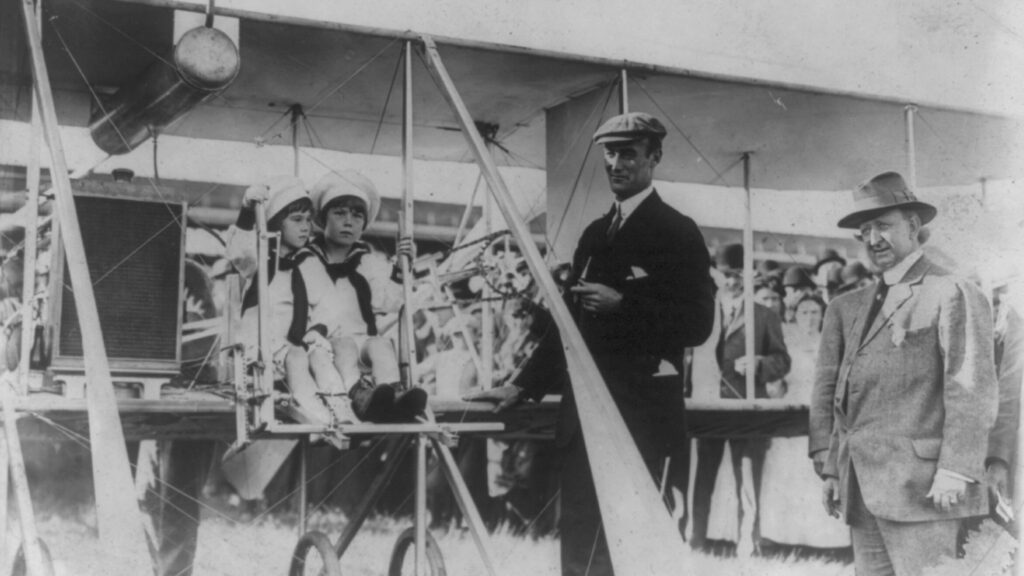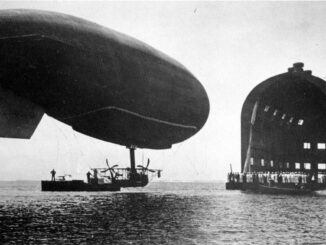 On 12th January 1879, American aviation pioneer, Calbraith Perry Rodgers, was born in Pittsburgh, Pennsylvania.
On 12th January 1879, American aviation pioneer, Calbraith Perry Rodgers, was born in Pittsburgh, Pennsylvania.
Calbraith Perry Rodgers was born into a well-known family of naval commanders. Among his ancestors were Commodore John Rodgers (born 1772, grandfather), Commodore Oliver Hazard Perry (great-grandfather) and Commodore Matthew Calbraith Perry (great granduncle). His close relatives included Rear Admiral John Rodgers (born 1812), Vice Admiral William Ledyard Rodgers and Commander John Rodgers (born 1881).
Despite having so many senior naval officers among his ancestors, Calbraith Perry Rodgers could not continue the family tradition. At age of six, he contracted a scarlet fever that resulted in partial deafness. Nevertheless, in the coming years Calbraith became a member of the New York Yacht Club and was interested in various motorsports. In 1911, Calbraith followed his cousin John Rodgers (born 1881), who just became the first Navy officer assigned to aviation programme.
At the beginning of his aviation career, Rodgers was experimenting with some kites but shortly after began with pilot´s training at the Wright Brothers company. Calbraith used that opportunity and took some flying lessons from Orville Wright. Then, together with John, they decided to buy their own Wright Flyer aircraft.
On 7th August 1911, Calbraith Perry Rodgers successfully passed his final exam and received his pilot´s license with number 49. A week later, he already took part in the 1911 Chicago International Aviation Meet and won the flight duration competition there. According to press reports from the era, the meeting in Chicago was attended by approximately 500,000 spectators. Therefore, that victory brought Calbraith an immediate fame, not mentioning more than eleven thousand USD in prize money.
Continuing the momentum of his victory, Calbraith Perry Rodgers turned his attention to another challenge, the Hearst Prize. One year ago, an American publisher William Randolph Hearst offered a prize of 50,000 USD (an equivalent of approximately 1,600,000 USD today) for an aviator who would manage to fly coast to coast across the United States. The direction did not matter, but the flight had to be completed within thirty days from the start.
Calbraith Perry Rodgers decided to participate in that competition. His aircraft was a Wright Model EX, named Vin Fiz – after a soft drink manufactured by Calbraith´s sponsor, J. Ogden Armour and his company. During his journey through the United States, Calbraith Perry Rodgers intended to fly above the rail tracks and had to be followed by a special train that included spare parts for his aircraft.

Just a few days before the planned take-off of the Vin Fiz, another aviation pioneer attempted to win the Hearst Prize. On 13th September 1911, James J. Ward (aka Jens P. Wilson), an American of Danish descent, took-off from Governors Island in New York, flying a Curtiss Model D aeroplane. However, he was not able to leave the New York state – his aircraft crashed due to engine failure and Ward had to withdraw from the race.
Calbraith Perry Rodgers began his transcontinental journey on 17th September, taking-off from Sheepshead Bay in New York. In order to avoid the Rocky Mountains, his flight route went through Chicago, the Midwest, Texas and then California. On 5th November, the Vin Fiz successfully landed in Pasadena, but Calbraith missed the prize deadline by nineteen days.
Nevertheless, the first coast-to-coast transcontinental flight across the United States was successfully completed after covering a distance of more than 6,400 kilometres. The journey required eighty-four flight hours and more than seventy stops, but also included several crashes and accidents on the way, as well as countless repairs of the Calbraith´s aeroplane. On his way, the American aviation pioneer was followed by thousands of spectators who flocked in large numbers to planned stopover locations – for example, Calbraith´s landing in Pasadena was followed by more than 20,000 people, his next arrival to Long Beach attracted twice as many spectators.
After his record flight, Calbraith Perry Rodgers stayed at the West Coast. He performed several exhibition flights, as well as made some attempts to fly over the ocean.
On 3rd April 1912, during the exhibition flight in Long Beach, Calbraith´s Wright Model B aeroplane flew into a flock of birds. The aircraft crashed into the ocean, seriously injuring the pilot. Calbraith Perry Rodgers died shortly after the accident. Reportedly, he was the first pilot in aviation history who died as a result of bird strike.
The Vin Fiz aeroplane was donated by Calbraith´s widow for museum purposes and today is being exhibited at the National Air and Space Museum in Washington, D.C.
The Hearst Transcontinental Prize expired in November of 1911, without a winner.

Cover photo: Calbraith Perry Rodgers in front of his aircraft, 1911 (photo: Library of Congress, LC-USZ62-35555)



